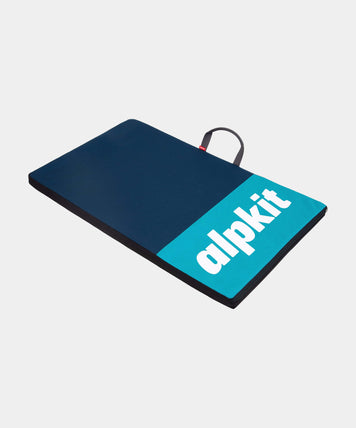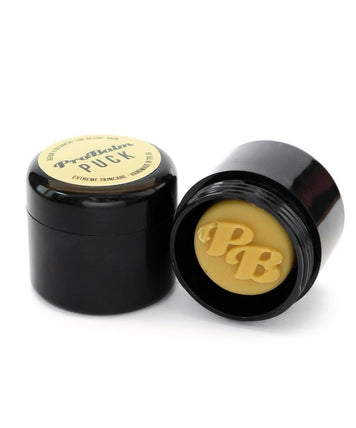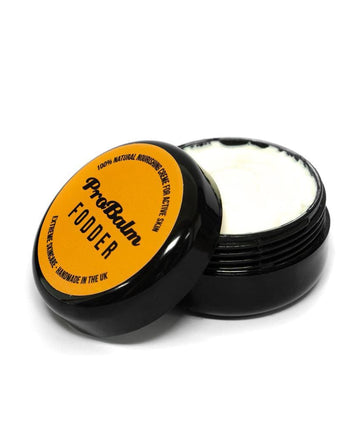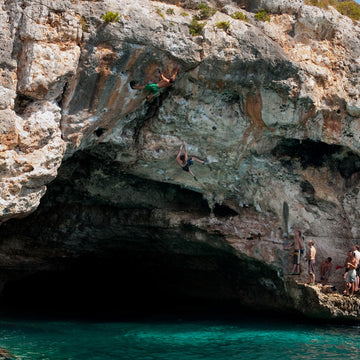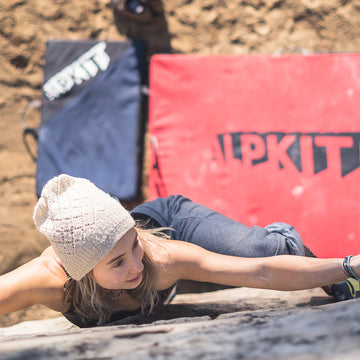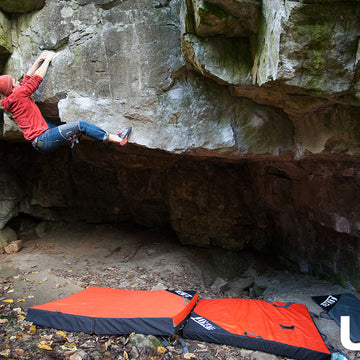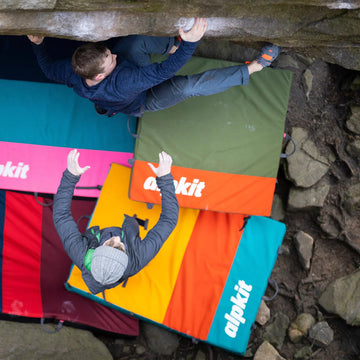
Alpkit bouldering mats are made in Britain in our own on-site factory. They come with a 25 year warranty, using top quality, durable materials that are built to last. Here's how we developed them...
Bouldering mats were one of the very first products we designed at Alpkit. Even today, every Alpkit pad is handmade in our own UK factory, right next door to Alpkit HQ. But not before we've throughly tested every prototype on the Peak District's finest problems!
We've fallen off boulders all over the world, so we knew that Alpkit pads would have to use top quality, durable materials and be built to last. Our bouldering mats have been proven in some of the best bouldering areas in the world: the Peak District, Rocklands, Val di Mello, Fontainebleau, Magic Woods and Albarracin — to name just a few.
We take enormous pride in the quality of our pads and it gives us a real buzz knowing that climbers trust them to seek out inspiring lines — some even developing into British and World champions. But there were plenty of things to consider when developing our range:
Developing our Bouldering Mats
- Selecting the best foam for the job
- Choosing fabrics that are built to last
- Developing a comfortable carrying system
- Paying attention to the finer details
- Designed and made by climbers

Selecting the best foam for the job
We’ve looked at more foam than is frankly healthy over the years. But safety isn’t something to scrimp on, especially when climbing. We’ve worked tirelessly to find the best combination of foam to hit the sweet spot between impact absorption, durability, and weight. You can find out even more info in our blog on bouldering mat foam but here’s a quick overview.
Using top quality foam
All the foam we use is 'cross-linked'. Cross-linkin bonds the molecules in the foam together, molecules that wouldn't usually link in standard bouldering mat foam. Cross-linked foam is much stronger and longer-lasting, resisting the wear and tear that occurs with repeated falls and compressions. It also makes our foam more shock absorbent than other foams on the market.
Prioritising protection
The foam we’re currently using is thicker than in previous incarnations, partly to work with the shape of our pads and partly because boulderers are increasingly using thicker foam. Our pads tend to feel firm in comparison to other brands, but this firmness doesn’t necessarily mean you’ll get a hard fall. What it does mean is that your fall will be better supported – protecting your heels and ankles – and your pad will last longer.
The perfect foam sandwich
Our Mujo and Origin pads are designed to cover the majority of boulderers’ needs. It was important to find a good balance between protection on higher falls and comfort on smaller falls for these mats. We chose to use two layers of foam: open cell foam to absorb impact and cushion the smaller falls; and closed cell foam to stop you bottoming out on higher falls.
The Project is made to handle repeated big falls and high ball problems, so we added another layer of closed cell foam to the sandwich (closed-open-closed). This gives you the extra support you need on higher falls and provides more protection against rocks or uneven ground beneath the pad.

Choosing fabrics that are built to last
The fabric on your bouldering mat sees more rough use than almost any other piece of outdoor gear. As well as protecting that valuable foam from damage, it has to be dragged in and out of car boots, laid on rough ground and squeezed into awkward gaps. Our bouldering pads are all made in our factory next door. This means we’ve been able to test a huge range of fabrics on-site to make our pads as hardwearing as possible.
Cordura Nylon®
We opted for 1100 denier Cordura®, a fabric we’ve had a lot of experience working with. Cordura® is a brand of high tenacity nylon (or nylon 6,6). These nylon 6,6 fibres have exceptionally high levels of tear strength and abrasion resistance – much greater than standard nylon (nylon 6) fibres. It's an incredibly hardwearing material and the ideal fabric for bouldering mat covers.
Using a large thread diameter (that’s the ‘denier’ bit) for the fabric makes our pads even more durable – enough for years of bouldering on rough ground. We've tested this 1100D Cordura® extensively to prove that it can withstand the test of time (and a healthy dose of use-and-abuse). It's been submitted to a sanding machine in our UK factory and used year in, year out by our product developers and machinists in the Peak District National Park.

Developing a comfortable carrying system
There’s no point in having a great pad if you can’t carry it to the crag. Our pads all feature rucksack straps and hip belts to make them more comfortable to carry (with the exception of the streamlined Phud and the Waffa sit pad). A lot of testing has gone into situating the carry system at the right height to avoid the pad hitting the backs of your knees or sending you head over heels down the first slope you come across.
Due to its size and weight, portability was a big point of discussion for the Project pad. We decided to use a thermoformed rucksack back panel (just like the ones we use on our rucksacks) rather than removable straps. This makes it much more comfortable to carry on the long walk-ins to your project.

Paying attention to the finer details
We’ve been making bouldering pads here in our factory on the edge of the Peak District since 2011. Having production right next door means we can ensure the highest levels of manufacturing standards and quality control. That’s why all our pad covers come with a 25 year Alpine Bond (the foam comes with a standard 3 year Alpine Bond and we also offer replacement foam). All Alpkit pads are bar-tacked and double-stitched to ensure they don’t split at the seams when you take a big fall.
One of the major changes in our pad range is the corners, which are now squared-off (yes, really, it’s a big deal to us!). Pads with squared off corners fit together better, with fewer gaps in between, giving you a safer setup. They’re also far easier to stack. Having squared-off corners does result in slightly reduced durability compared to our old designs. But using bombproof 1100D Cordura® more than makes up for this trade-off.

Designed and made by climbers
Alpkit isn’t just a name above the door or a logo on a product – it’s the people who work here and the people who use and trust our products day in, day out. Our factory team are a real mix of characters with mad keen climbers working alongside experienced machinists from the local textile industry. It’s a real melting pot of shared experiences, skills and ideas!
Our factory may be small but our team's skill and experience means we are able to tweak and improve our range, innovating as we go. Some developments make small advances, others great leaps. Often, someone will come back from a session at the crag with a new idea for a pad. They'll make a prototype the next day, test it that evening, and we can have it in production in a matter of days. You wouldn't get that with a mass-produced pad!

